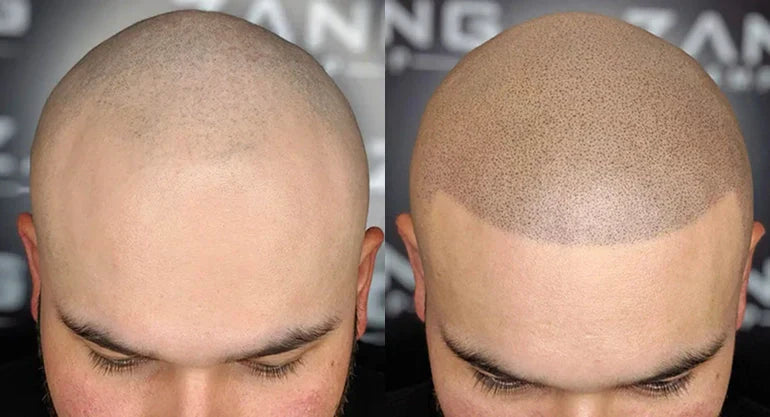SMP Repair Success Stories: Transformations Without the Need for Laser Removal
Reviewed by Zang and Ridwan
Scalp Micropigmentation (SMP) has helped thousands of people feel confident again. But not every experience turns out the way it should. Whether it's mismatched pigment, harsh hairlines, or uneven density, a botched SMP job can feel like a huge setback. The good news? Laser removal isn’t your only option. In fact, skilled SMP artists can often repair and transform these treatments into something natural-looking and seamless.
What Causes Botched SMP Treatments?
Most of the time, it comes down to one thing: inexperience. Artists who haven’t been properly trained—or who rush the treatment process—can leave behind results that look fake, patchy, or just plain wrong. Here are a few common causes:
- Overly dark or blue pigment that doesn’t match your skin tone
- Hairlines that are too low, sharp, or unnatural
- Blotchy or uneven application with no blending
- Ink that spreads under the skin, known as pigment migration
- Incorrect needle depth or pressure, which leads to scarring or blurry dots
SMP should mimic your natural hair follicles. When done right, you shouldn’t even be able to tell it’s a hair tattoo. But when things go wrong, the difference is obvious and frustrating.

Why Laser Removal Doesn't Always Help
When a client comes in with a bad SMP job, laser removal might sound like the obvious fix, but it doesn’t always solve the problem. Laser tattoo removal can be expensive, painful, and time-consuming. It also comes with recovery time and possible skin damage, and it doesn’t guarantee that the area will be ready for new pigment afterward.
In many cases, you don’t need to erase everything to get a better result; you just need an experienced SMP artist who knows how to work with what’s already there.
Which Types of SMP Mistakes Can Be Corrected with SMP Repair?
Not every issue calls for laser tattoo removal. SMP repair can fix a range of common problems, including:
- A hairline that looks too straight or heavy
- Faded or discolored tattoo dots from old work
- Areas with uneven density or inconsistent texture
- A poorly blended crown or visible scar
- Bad shading that highlights hair loss instead of camouflaging it
These problems often come down to a few key factors: the artist’s technique, pigment selection, and whether the skin was treated gently during the original SMP procedure.

Examples of How SMP Repair Can Help
One client came in with sharp, dark lines across the front of his scalp that looked more like a marker than a hairline. After a few treatments, we softened the edge and adjusted the tone to match his skin better.
Another patient, a woman dealing with postpartum hair growth changes, had scattered dots that stood out against her fine hair. We reworked the entire section with a subtle blending, giving her back the look of fullness.
Even in cases of bad SMP, there’s often a path forward without the use of laser tattoo methods.
How Many Sessions are Needed with SMP Repair?
The number of sessions depends on the extent of the damage and how much blending is required. Most people need between two and four sessions, though small fixes can sometimes be done in one. A more complex case, like uneven density, poor placement, or SMP that’s aged poorly, might take a few more visits.
Zang SMP: Expert Repair for Hair Tattoo Treatments
If you’re dealing with a bad SMP job, you don’t always need to go through laser removal. At Zang SMP, we specialize in repairing and reshaping existing work, no matter how complex. With decades of experience in treating different skin types, hairlines, and pigment issues, our team knows how to bring out the best results using skill, not shortcuts.
Reach out for a free consultation and find out how we can transform your SMP results with a better approach.
